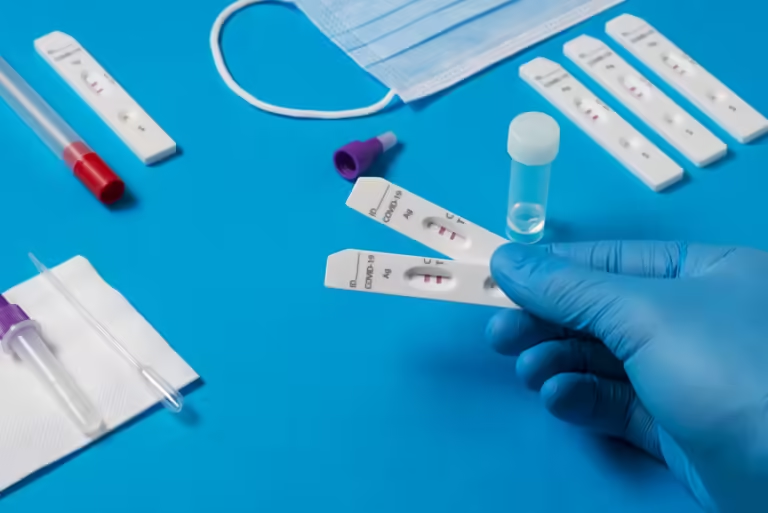Pharmacogenomics—the study of how genes affect a person’s response to drugs—is transforming modern medicine. By tailoring drug treatments based on genetic profiles, it promises safer and more effective therapies. Yet, while pharmacogenomic guidelines have been developed worldwide to support this precision approach, they vary considerably between countries. This divergence challenges the consistent implementation of pharmacogenomics on a global scale. Understanding why these guidelines differ so widely requires exploring scientific, social, economic, and policy factors that influence their creation and adoption.
Divergent Implementation: What the Evidence Reveals
Pharmacogenomic (PGx) testing is no longer an experimental frontier—it is available in hospitals, research centers, and diagnostic labs across continents. Yet the extent to which it has been clinically integrated into routine care varies dramatically. While some countries have embedded genetic testing into national prescribing systems, others are still debating the first steps. The gap is no longer in scientific understanding, but in translation—turning genomic insights into sustainable, equitable, and reimbursed clinical practice.
Early Adopters
The Netherlands is widely recognized as one of the most successful PGx implementers. The Dutch Pharmacogenetics Working Group (DPWG), founded in 2005, systematically develops gene–drug dosing guidelines that are updated continuously and integrated into electronic prescribing software. These recommendations are directly embedded in clinical workflows, meaning that when a physician prescribes a medication affected by a known variant—such as clopidogrel or simvastatin—alerts automatically flag the need for genotype-informed dosing. Pharmacists and clinicians receive built-in decision support, making PGx part of the ordinary care process rather than an optional add-on. The DPWG’s close collaboration with the Clinical Pharmacogenetics Implementation Consortium (CPIC) has further harmonized international standards.
Similarly, Canada has made important progress through its national network of pharmacogenomic research programs. Institutions such as the Canadian Pharmacogenomics Network for Drug Safety (CPNDS) focus on pediatric populations and drug toxicity prevention, particularly in oncology and cardiology. Implementation has been supported by provincial health authorities in British Columbia and Ontario, where PGx testing for thiopurine methyltransferase (TPMT) or dihydropyrimidine dehydrogenase (DPYD) variants is now routinely offered before chemotherapy or immunosuppressive therapy.
Australia has also moved steadily toward clinical adoption. The Royal College of Pathologists of Australasia (RCPA) has published national guidelines for incorporating PGx into pathology services, emphasizing mental health, oncology, and cardiology. Several public hospitals have integrated PGx into electronic medical records, while private labs offer panels for antidepressants, opioids, and cardiovascular drugs.
Singapore represents another model of structured national strategy. Through its PRECISE initiative and National Precision Medicine Programme, Singapore has invested in large-scale genomic infrastructure, population reference panels, and clinician training. Major hospitals like the National University Hospital have embedded PGx decision support in electronic systems, offering routine testing for genes affecting warfarin, carbamazepine, and statins.
Japan and South Korea have taken population-specific approaches. Japan’s National Center for Global Health and Medicine has developed guidelines focusing on high-prevalence variants such as HLA-B*15:02 and CYP2C19, which are particularly relevant for Asian populations. South Korea’s “K-PGx” program aims to incorporate PGx into personalized care by integrating sequencing data into hospital networks and building local bioinformatics capacity.
Across Europe, several countries have followed the Dutch model. Spain’s Spanish Society of Pharmacogenetics and Pharmacogenomics (SEFF) adapts international recommendations to local genetic patterns and drug formularies. The United Kingdom, while slower initially, has begun incorporating PGx into the National Health Service (NHS) through initiatives such as the Genomic Medicine Service, which includes testing for clopidogrel and fluoropyrimidine toxicity genes as part of standard care in some hospitals.
In the United States, implementation has been more fragmented. Academic medical centers like Mayo Clinic, St. Jude Children’s Research Hospital, Vanderbilt University, and the University of Florida have pioneered clinical PGx programs, integrating test results into electronic health records with decision support. However, because the U.S. healthcare system is decentralized and reimbursement policies vary by insurer, patient access remains inconsistent. Medicare reimburses a limited subset of pharmacogenomic tests, and many commercial payers apply differing criteria for coverage. As a result, implementation is driven largely by institutional investment and research funding rather than national mandate.
The Middle Ground
Several middle-income countries are in the early stages of building PGx capacity. In China, despite significant research output and governmental investment in genomics, implementation remains uneven. A nationwide survey of children’s hospitals found that only about 40% offered genetic testing for personalized medication, and most of these tested fewer than ten genes. Quality control varied widely—some laboratories lacked internal validation procedures or external proficiency testing—and reimbursement was inconsistent. Costs ranged from modest fees to nearly two thousand yuan per test, depending on the region. Many practitioners reported limited training in interpreting PGx results, underscoring a need for education and national standardization.
In India, where the pharmaceutical market is vast and genetically diverse, PGx adoption has been limited mostly to private laboratories and academic research projects. Cost constraints, limited regulatory frameworks, and low awareness among clinicians have slowed clinical translation. A few tertiary hospitals in metropolitan centers like Mumbai and Bengaluru offer PGx testing for drugs such as clopidogrel, warfarin, and carbamazepine, but there is little integration into public health systems.
Middle Eastern countries such as Qatar, Saudi Arabia, and Lebanon have developed national genomics strategies and genomic medicine centers, but pharmacogenomics remains largely pilot-based. Surveys among physicians in these regions show high awareness of PGx’s value but low testing rates, primarily due to cost and lack of institutional support.
Latin American countries face similar barriers. Brazil, Mexico, and Colombia have active pharmacogenomic research groups and published population-specific data on variant frequencies, yet routine testing is still uncommon. Regulatory gaps, lack of reimbursement, and limited clinician training have slowed progress. Argentina’s efforts through the Latin American Network of Pharmacogenomics and Personalized Medicine (RELIVAF) illustrate the growing regional interest but also the difficulties of scaling up in fragmented healthcare systems.
In Africa, the gap is widest. Sub-Saharan Africa remains severely underrepresented in global PGx research and implementation. A handful of initiatives in South Africa and Kenya have begun generating local pharmacogenomic data, but testing infrastructure, funding, and policy frameworks remain minimal. Without dedicated investment, the continent risks being left behind in the global transition to precision medicine.
Contrasting Examples
The contrast between the Netherlands and much of the developing world illustrates the global disparity. Dutch clinicians routinely receive automated dosing alerts informed by DPWG guidelines, while in many African or South Asian hospitals, genetic testing is available only through private labs or research grants. In Singapore or Japan, PGx is part of hospital digital infrastructure; in parts of Latin America, tests are paper-based or require samples to be shipped abroad.
Even within high-income countries, fragmentation persists. In the U.S., two patients with identical genetic variants may receive very different care depending on whether their hospital participates in an implementation consortium. Meanwhile, in Canada or the Netherlands, national coordination ensures a uniform approach.
Key Drivers of Variation in Pharmacogenomic Implementation
1. Economic and Reimbursement Constraints
The cost of genetic testing and the lack of clear reimbursement pathways are often cited as the largest obstacles. In many health systems, insurers or public payers do not yet recognize which pharmacogenomic tests qualify as medically necessary. Hospitals may subsidize early programs, but sustainable scaling demands predictable funding, cost–effectiveness evidence, and policy alignment.
2. Technical and Laboratory Capacity
Reliable pharmacogenomic testing requires validated protocols, quality assurance, certified labs, and interoperability of data systems. Some regions lack certified local laboratories, forcing reliance on external reference labs, which introduces delays, regulatory hurdles, and logistical complexity. Variability in methods and lack of standardized interpretation complicates cross-site consistency.
3. Clinical Integration and Workflow
Even when tests are available, embedding them into clinician workflows is nontrivial. Without decision support tools in electronic health records (EHRs), clinicians may not receive usable alerts or guidance at prescribing time. Existing clinical workflows may resist change, and adding genomic steps can be seen as burdensome. Rigid institutional processes and lack of alignment between disciplines (pharmacy, genetics, informatics) slow uptake.
4. Education, Awareness, and Interpretation
Many clinicians feel unprepared to interpret pharmacogenomic reports or uncertain about when testing should be ordered. Formal training in pharmacogenomics is still limited in medical, pharmacy, and nursing curricula. Even when continuing education exists, uptake is uneven. Without confidence in interpreting results, clinicians may ignore or underutilize genetic guidance.
5. Genetic Diversity and Guideline Relevance
Most established pharmacogenomic guidelines originate from data in populations of European ancestry. But allele frequencies and variant–drug relationships often differ across ethnic groups. Applying guidelines derived from one population to another may lead to misclassification, under- or overdosing, or missed opportunities. Some countries have responded by generating local pharmacogenomic data and adapting guideline recommendations accordingly.
6. Regulatory, Ethical, and Policy Factors
Laboratory-developed tests, regulatory oversight, intellectual property, data privacy, and governance of genetic information are all evolving. In some systems, stringent regulation may improve test quality but also raise costs or limit the number of capable labs. Ethical concerns around access, equity, and the possibility of widening health disparities if only wealthy populations benefit are also central considerations, especially in resource-constrained settings.
7. Evidence Base, Clinical Outcomes, and Health Economics
Adoption is often hindered by gaps in evidence demonstrating improved clinical outcomes or cost savings in diverse settings. While some studies show that preemptive pharmacogenomic testing can reduce adverse drug reactions and hospitalizations, more real-world, long-term outcome data are needed across populations. Economic evaluations that demonstrate return on investment in local health contexts are critical to convincing payers and policymakers.
The “Implementation Gap” in Practice
Taken together, these forces contribute to an “implementation gap” — where a patient’s access to genetically informed prescribing depends less on the science of pharmacogenomics and more on geography, institutional priorities, and funding. A patient in a country with strong infrastructure, reimbursement, and institutional commitment may benefit, while one elsewhere may not, despite similar medical needs.
In many settings, pharmacogenomic testing remains optional, recommended but not mandated, or accessible only via research programs. Some ambitious plans have incorporated testing into national or regional health strategies, but progress is uneven. Harmonizing standards, building shared data infrastructure, and promoting capacity building remain ambitious goals.
Toward More Equitable and Effective Adoption
To narrow the gaps, several strategic directions stand out:
- Generate local evidence and adapt guidelines: Investing in pharmacogenomic research in underrepresented populations will help refine dose recommendations and genotype–phenotype associations relevant to each context.
- Strengthen laboratory and informatics infrastructure: Certification, external quality programs, interoperable EHR systems, and decision support capabilities are foundational.
- Ensure sustainable financing: Demonstrating cost-effectiveness and negotiating reimbursement pathways are critical for scalability.
- Enhance education and clinician support: Integrating pharmacogenomics into formal curricula, offering interpretive tools, and building communities of practice will empower clinicians.
- Foster regulatory alignment and ethical oversight: Clear policies on test regulation, data governance, consent, and equitable access can reduce barriers while protecting patients.
- Encourage international collaboration and harmonization: Shared data repositories, implementation networks, and consensus frameworks can accelerate progress while respecting local adaptation.
The Bigger Picture
What emerges from global evidence is that pharmacogenomics is less a question of “if” than “how.” The science is mature, but policy, economics, and infrastructure dictate who benefits. The most successful countries treat PGx as a core healthcare infrastructure, supported by national guidelines, electronic systems, education, and reimbursement. Struggling regions tend to frame it as a research add-on or luxury technology.
Closing this gap requires more than publishing guidelines—it demands coordination among governments, payers, and health institutions; investment in laboratory capacity and digital infrastructure; and inclusion of diverse populations in research. Without such efforts, pharmacogenomics risks reinforcing, rather than reducing, global health inequities.
References



